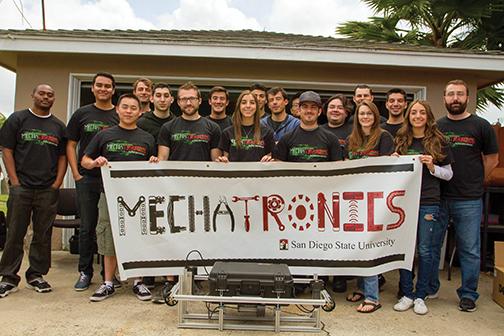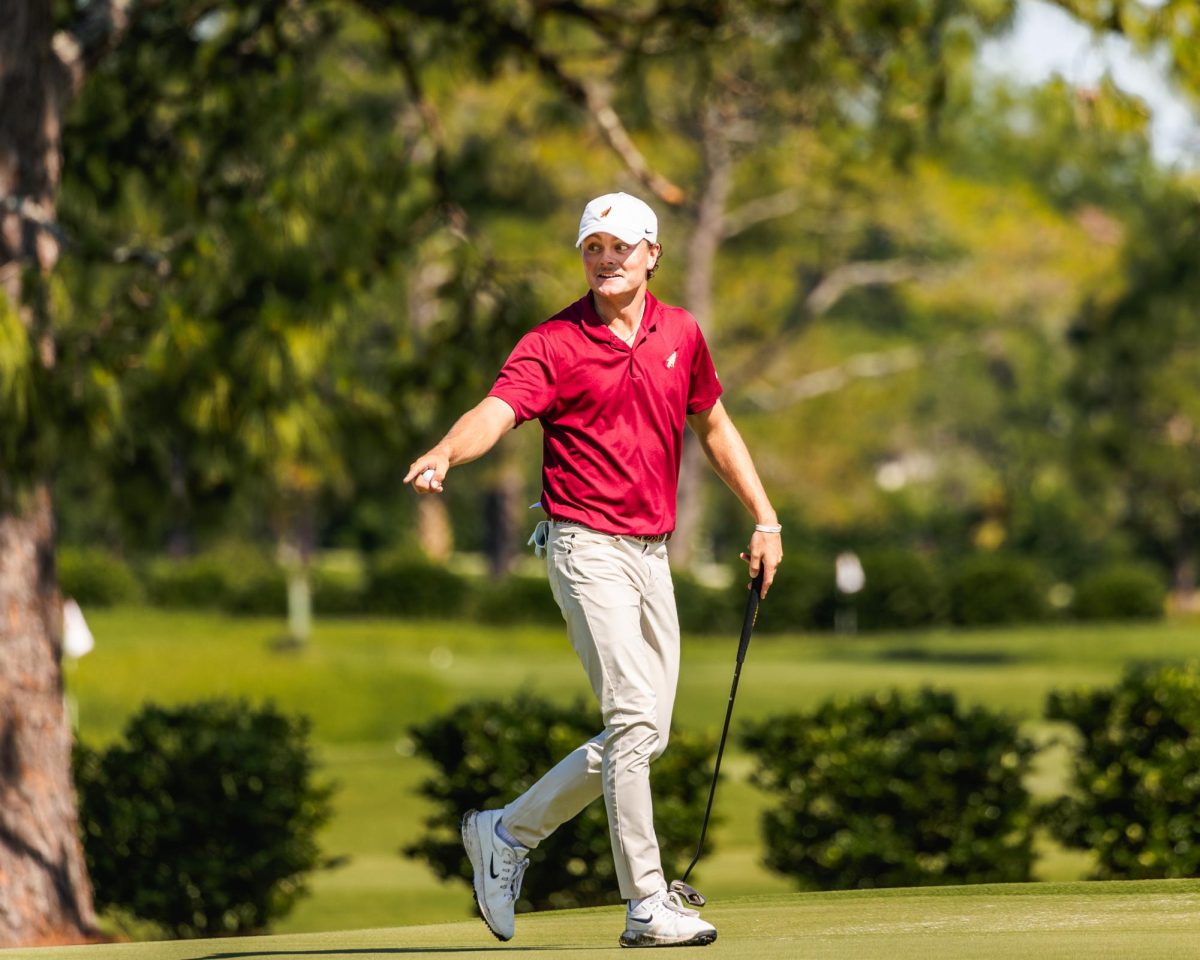
San Diego State’s Mechatronics Club is looking forward to their first competition, the U.S. Office of Naval Research (ONR) and Association for Unmanned Vehicle Systems International (AUVSI)’s International Robosub Competition starting July 28. As first year competitors, the club is a mix of nerves and confidence that can only be explained by a long year of anticipation and hard work.
The club initially discovered the annual event before the 2013 competition had taken place. “So we actually went to the competition last year to check it out and see if we wanted to do it,” Project Manager and computer engineering senior Maryann Ibrahim explained. “We were like, ‘We really want to do this!’ We didn’t know how hard it was going to be, but we’ve learned so much doing it and it’s been a really fun experience.”
The 17th International Robosub Competition is based on the advancement of the AUV, or the Autonomous Underwater Vehicle, that involves challenging obstacle course-style missions that teams must complete for points. It is a competition native to San Diego that will be held at the SSC Pacific’s SPAWAR TRANSDEC Pool in Point Loma. About 40 teams from all around the world will be competing in this year’s competition, traveling from places as far as India, Japan, and Egypt.
Preparing for this competition has been an extensive and difficult process.
“It takes up a lot of time, and you have to be really dedicated,” Ibrahim said.
Designing the prototype began in the Fall 2013 semester and was followed by the building of the actual robosub, named The Endeavor, in the Spring 2014 semester. Club meetings were held once a week and build sessions were held on weekends. Since summer break has begun, the club meets on a daily basis for testing. “As the name implies, it’s been a crazy endeavor,” mechanical team member and mechanical engineering senior Rodrigo Leon-Alvarez said.
Developed and tweaked over time, the club decided to use a comparatively simple approach for their robosub in this year’s competition.
“Design-wise [the robosub has] definitely changed. It’s been improved over time, but we definitely have kept our goals from the beginning of what we wanted to accomplish,” embedded systems team member and computer engineering senior Petar Tasev said.
As a first year competitor, the club has focused on the essentials in order to obtain as many points as they can with the time and manpower available to them. In an effort to complete this year’s missions as efficiently and accurately as possible, the club has worked to perfect their image processing, coding, internal city planning, framework, microcontrollers, and circuit boards, just to name a few of the key components necessary for the operation of the robosub. Apparently, even with all this is intricacy, the club still acknowledges their vehicle to be that of a beginning team.
“It’s brutal for first year teams just because, every single year, they make everything harder in general for the more experienced teams, but that just puts the first year teams at a huge disadvantage,” Leon-Alvarez said.
Despite this, he does not feel hopeless. “(The robosub) goes through the (entry) gate every single time now. Seven out of eight times it’ll hit the buoy. I’ve seen the bottom camera align itself to be parallel with the colored line like nobody’s business.”
The Mechatronics Club’s participation in this year’s competition, though a true test for everyone involved, paves the way for future years of SDSU students that choose to take on the daunting task of creating a competitive robosub. But after the work that this year’s club put in to get to where they are, it is safe to say that they will have less formidable prospects and a strong basis for an even better model.
Photo courtesy of SDSU Mechatronics Club











